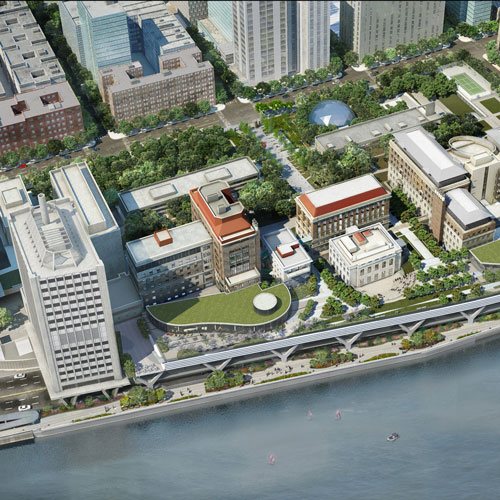There was a time when people believed that only those who worked in creative fields could provide creative direction—especially when it came to designing for retail stores.
At least, that’s what veteran visual merchandiser Mark Campton experienced upon breaking into the business in 1985, after taking classes at UCLA Extension Architecture and Interior Design, and Otis Parsons School of Design.
“That’s something that certainly changed over the years—to be more accepting of other people from all disciplines and that a good idea can come from anywhere and can be nurtured,” Campton says. “One valuable lesson I have learned is that it’s better to be more inclusive than exclusive.”
During his 30 years in the business, Campton has held creative leadership roles in retail and wholesale design for popular brands that include Levi Strauss (specifically the Dockers brand), Macy’s, and Payless Shoes. He’s helped these companies and others launch, reposition, and refresh brands and concepts to spark both new energy and measurable growth.
“Ever since I was a little kid, I have really liked going to stores, looking at displays and liked everything about it,” he says. “I grew up in the age when shopping malls were becoming all the rage. Anytime a new mall opened, I went and spent a lot of time there. Seeing windows at Christmastime made a huge impression on me.”
His earliest job was working in the men’s department for a department store in Colorado after graduating high school. It’s there that he got his first taste of what happens behind the scenes.
“I learned everything from loading the stock, to truck deliveries, to setting up the floor, and managing inventory,” Campton says. “I saw all that went into changing up the floor to make it look interesting, and I’ve stayed in retail ever since.”
While on the Dockers’ brand for Levi Strauss, he improved equity, profit, and ROI by creating a soul for the brand through new environments and a richer consumer experience that enabled them to connect emotionally with the brand and its products. He says one of his most noteworthy accomplishments was reinventing Dockers’ as a collection, rather than just a commodity.
“It was an ongoing process for almost six to seven years, with everybody from the internal sales team and up, learning to think of the brand in a different way,” Campton says. “It was a series of small successes and wins, from building better locations on the floor in Macy’s or having some of the more premium collections being sold at department stores like Nordstrom.”
Through the years, the rise in technology has led to the biggest changes in the industry. Campton cites different software programs and the invention and refinement of AutoCAD as important stepping stones to improve the process of laying out—and even virtually walking through—different floor plans.
“It’s affected store rollouts and made them more efficient,” he says.
One of the secrets to Campton’s success in construction design is forming an emotional connection with the brands and products he represents.
“My job is dissecting what you want the consumer to feel when they walk through the door and how to project that through material choices, color choices, lighting, fixtures, displays,” he says. “It’s a pretty fluid process, so there’s never a done point. It’s always evolving and changing.”
In his most recent endeavor, as vice president of environments, store design and construction for Fossil, Campton was a part of the design team that helped Fossil redefine its store at the Stonebriar Centre, a shopping mall in Dallas. Campton credits the team not only for transforming Fossil’s store design, but also implementing changes that led to greater efficiency. He also helped craft a few hybrid stores.
“When I first got there, there was lots of input from outside resources that brand leadership had hired to give them opinions,” Campton says. “Some people know in their head or heart what it is they want, but have a hard time articulating what that is. For Fossil, they did a lot of trial and error, and there was this back-and-forth dance until you land on the ultimate ideal. It’s about taking all those ideas and putting them together in one store and making it a prototype place.”
The finished design was well received and with just a few tweaks, the rest of the stores were formatted in the same fashion. The designs also will be farmed out to Asia and Europe.
“The design team and project management and procurement team have done an outstanding job in the change of leadership and done an outstanding job with the final project,” he says.


